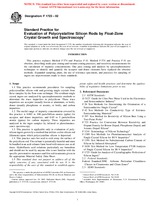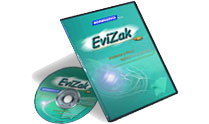Potrebujeme váš súhlas na využitie jednotlivých dát, aby sa vám okrem iného mohli ukazovať informácie týkajúce sa vašich záujmov. Súhlas udelíte kliknutím na tlačidlo „OK“.
ASTM F1723-02
Standard Practice for Evaluation of Polycrystalline Silicon Rods by Float-Zone Crystal Growth and Spectroscopy (Withdrawn 2003)
Automaticky preložený názov:
Štandardná prax pre hodnotenie polykryštalických kremíkových tyčí od Float - Zone Crystal rast a spektroskopie ( Withdrawn 2003 )
NORMA vydaná dňa 10.1.2002
Informácie o norme:
Označenie normy: ASTM F1723-02
Poznámka: NEPLATNÁ
Dátum vydania normy: 10.1.2002
Kód tovaru: NS-51309
Počet strán: 9
Približná hmotnosť: 27 g (0.06 libier)
Krajina: Americká technická norma
Kategória: Technické normy ASTM
Anotácia textu normy ASTM F1723-02 :
Keywords:
contaminants, float-zone crystal growth, impurities, polycrystalline silicon, polysilicon evaluation, segregation coefficient, single crystal silicon, ICS Number Code 71.040.50 (Physicochemical methods of analysis)
Doplňujúce informácie
| 1. Scope |
|
This standard was transferred to SEMI (www.semi.org) May 2003 1.1 This practice recommends procedures for sampling polycrystalline silicon rods and growing single crystals from these samples by the float-zone technique. The resultant single crystal ingots are analyzed by spectrophotometric methods to determine the trace impurities in polysilicon. These trace impurities are acceptor (usually boron or aluminum, or both), donor (usually phosphorus or arsenic, or both), and carbon impurities. 1.2 The useful range of impurity concentration covered by this practice is 0.002 to 100 parts/billion atomic (ppba) for acceptor and donor impurities, and 0.05 to 5 parts/million atomic (ppma) for carbon impurity. These impurities are analyzed in the ingot samples by infrared or photoluminescence spectroscopy. 1.3 This practice is applicable only to evaluation of polysilicon ingots grown by a method that utilizes a slim silicon rod (filament) upon which polycrystalline silicon is deposited. 1.4 This practice uses hot acid to etch away the surface of the polysilicon rod. The etchant is potentially harmful and must be handled in an acid exhaust fume hood with utmost care at all times. Hydrofluoric acid solutions particularly are hazardous and should not be used by anyone who is not familiar with the specific preventative measures and first aid treatments given in the appropriate Material Safety Data Sheet. 1.5 This standard does not purport to address all of the safety concerns, if any, associated with its use. It is the responsibility of the user of this standard to establish appropriate safety and health practices and determine the applicability of regulatory limitations prior to use. |
Odporúčame:
EviZak - všetky zákony vrátane ich evidencie na jednom mieste
Poskytovanie aktuálnych informácií o legislatívnych predpisoch vyhlásených v Zbierke zákonov od roku 1945.
Aktualizácia 2x v mesiaci !
Chcete vedieť viac informácii ? Pozrite sa na túto stránku.




 Cookies
Cookies
